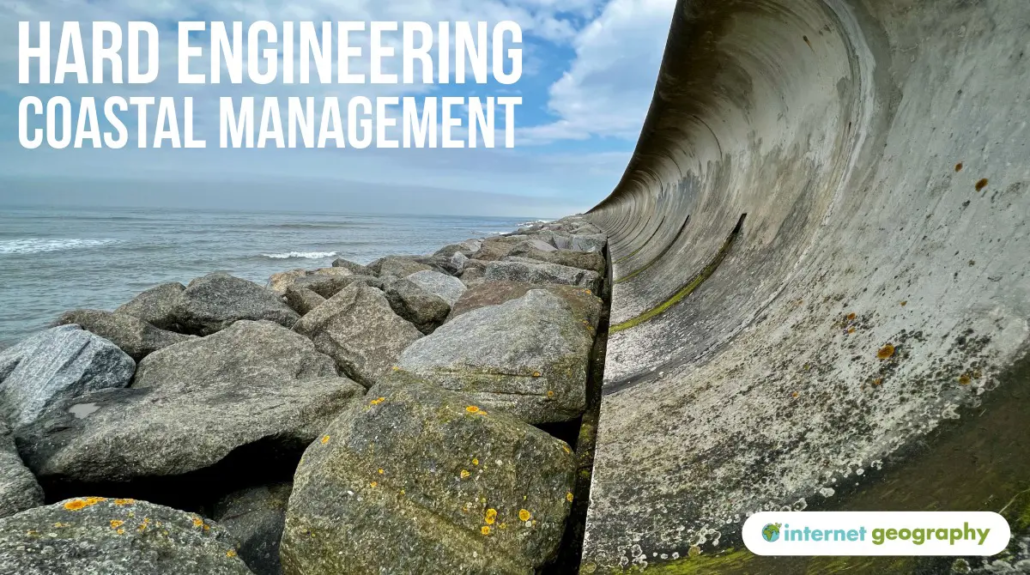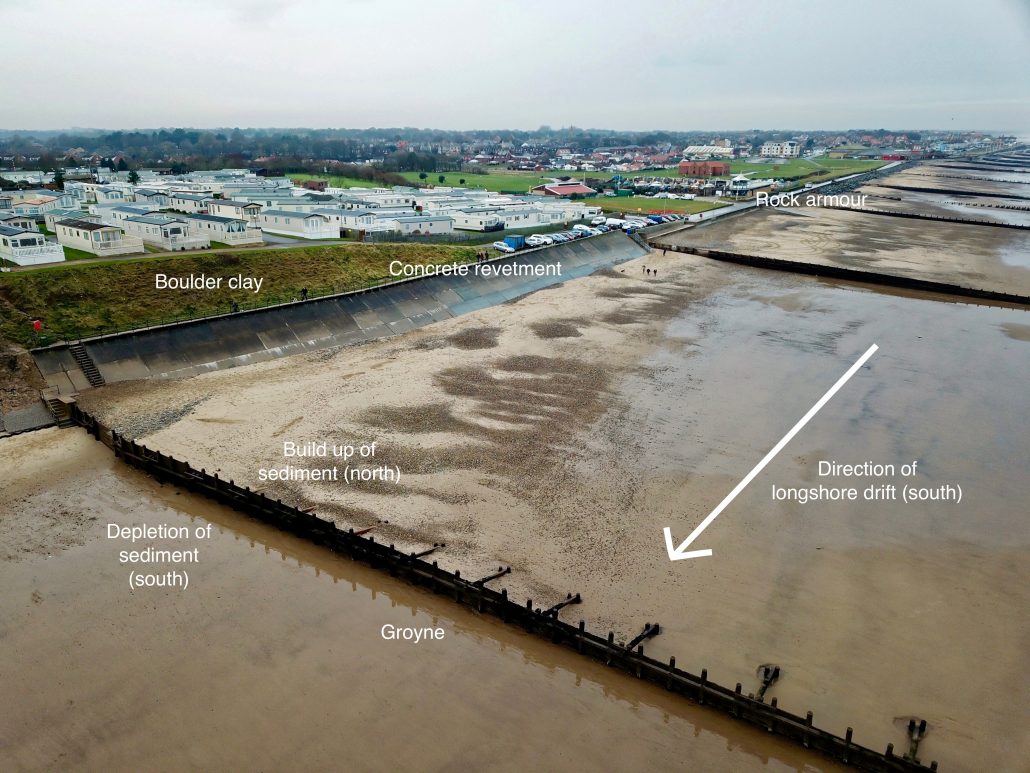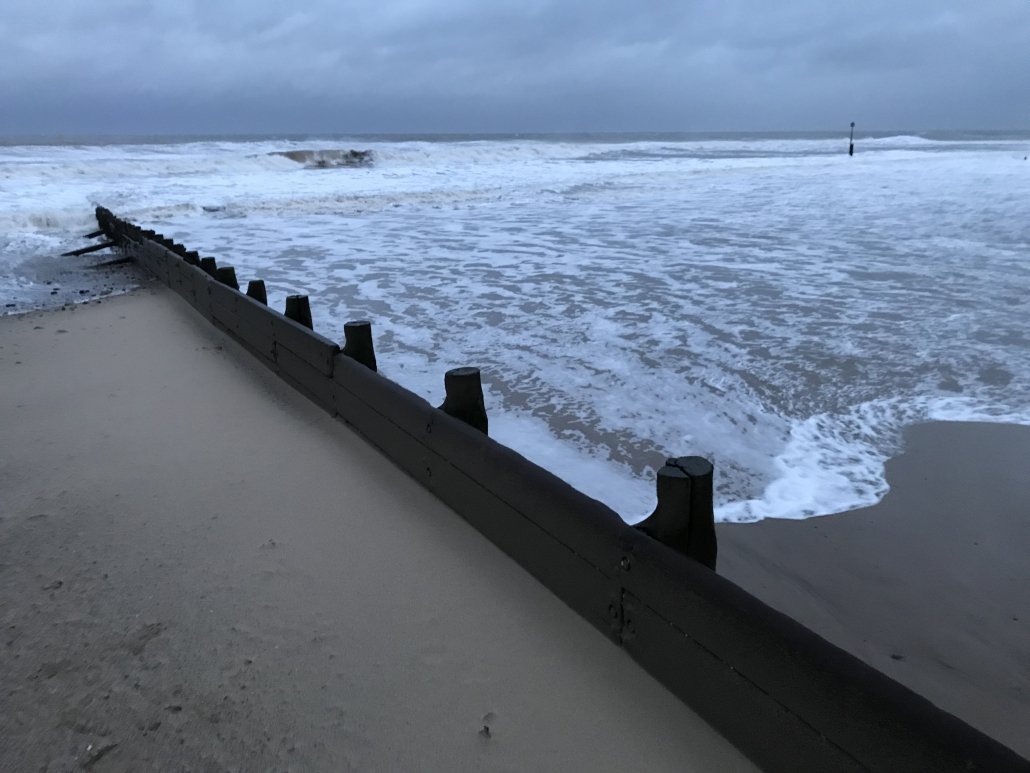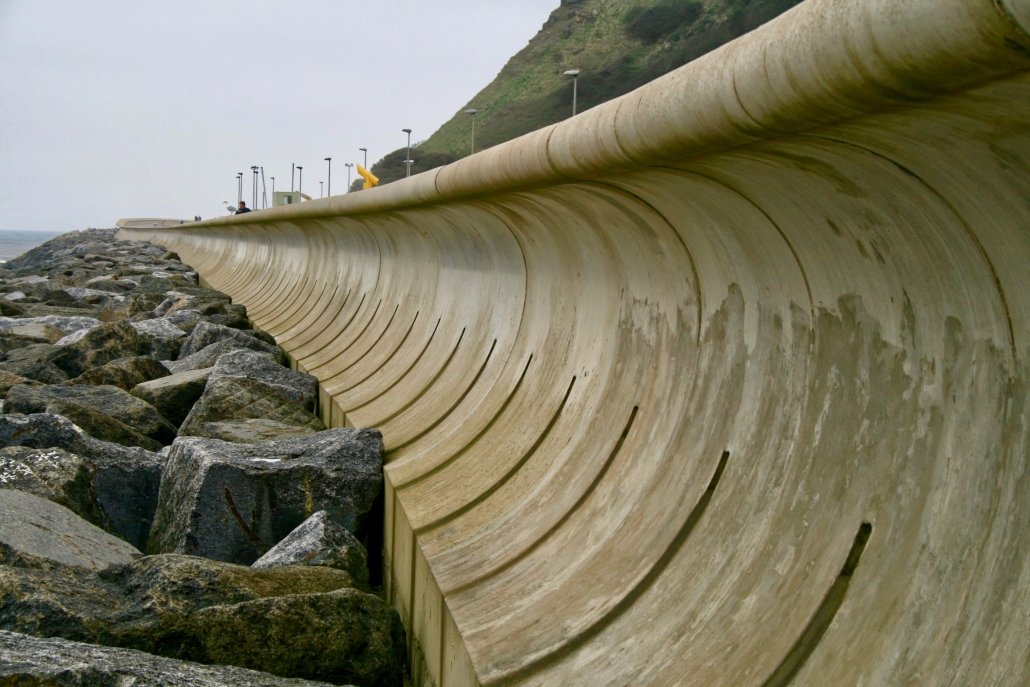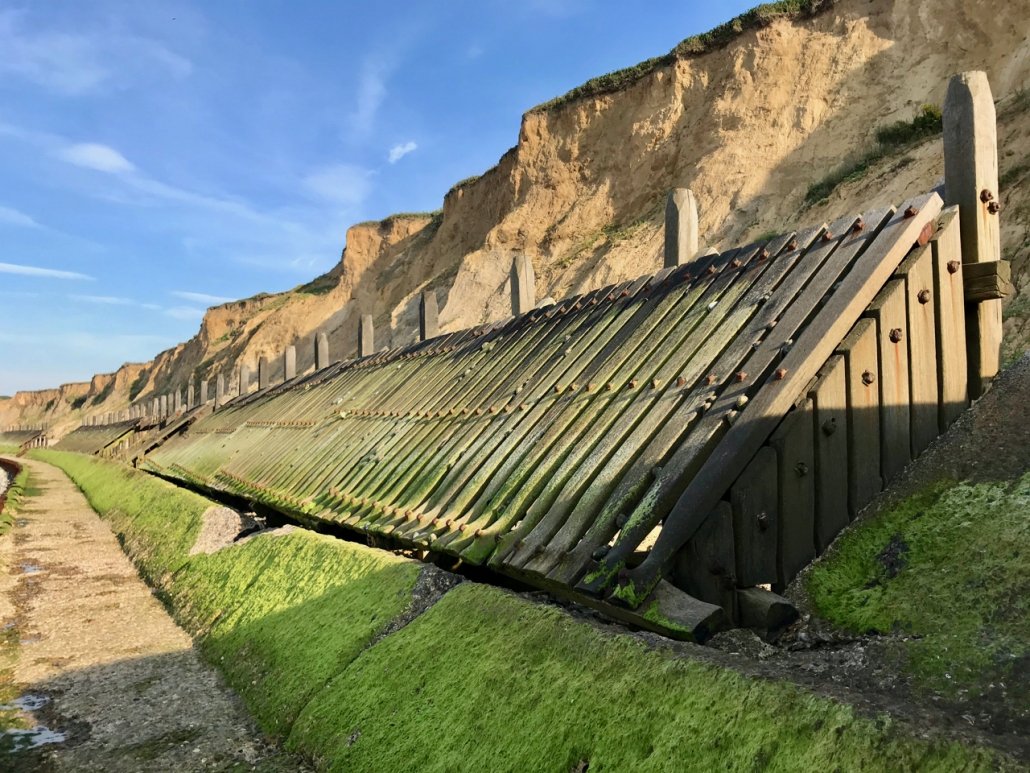Hard engineering coastal management involves building artificial structures that control natural processes.
Hard engineering approaches to coastal management tend to be expensive, have a short lifespan, and are visually unappealing and unsustainable. They often increase erosion in other places further down the coast.
The image below illustrates a range of hard engineering strategies implemented at Hornsea, on the Holderness Coast.
Groynes
Groynes are wooden barriers constructed at right angles to the beach to retain the material. The beach material, including sand and pebbles, is trapped between groynes and cannot be transported away by longshore drift. Groynes encourage a wide beach that helps absorb energy from waves, reducing the rate of cliff erosion. The photograph below illustrates the difference in how far waves travel inland when sediment is trapped by a groyne, thereby raising the beach’s height.
Advantages of groynes
Social
- Groynes act as windbreaks for people on the beach
- Groynes do not affect access to the beach.
Economic
- At around £ 5,000 each, they are relatively inexpensive, and if well-maintained, they can last 40 years.
- They are much cheaper to repair than other hard engineering solutions.
- A wide, sandy beach attracts tourists, which benefits the local economy.
Disadvantages of groynes
Environmental
- Groynes do not look attractive.
Social
- Groynes act as a barrier which impedes people walking along a beach
- The beach on the downdrift side of the groyne can be much lower than the up-drift side. This can make them very dangerous, particularly for young children. At Hornsea on the Holderness Coast, there is a height difference of almost 2m between the beach on either side of one groyne.
Economic
- Beaches downdrift of the defences are starved of beach material due to their impact on longshore drift. This leads to increased erosion, which has an economic impact further along the coast.
- Groynes need regular maintenance.
- Groynes are ineffective during storm conditions.
Approximate Cost
Typically around £5000 each
Sea Walls
Seawalls are usually built along the front of cliffs to protect settlements or other areas of high economic importance. They are often recurved, which means waves are reflected back on themselves. This can cause the erosion of material at the base of the seawall.
The video below shows the sea wall at Scarborough.
Advantages of sea walls
Social
- A sea wall gives people a sense of safety and security.
- Sea walls often have promenades on top of them, which are popular with tourists.
Economic
- Sea walls have a long lifespan and provide excellent defence where wave energy is large.
Environmental
- Sea walls do not impede the movement of sediment along the coast by longshore drift.
Disadvantages of sea walls
Social
- Sea walls can affect access to the beach.
- Coastal flooding can occur when waves overtop (break over) the sea wall.
Economic
- Sea walls are costly to construct and maintain. The UK Government is investing £30m in a new sea wall in Dawlish, Devon, to protect the mainline railway after it collapsed during storms on 4 February 2014.
- Reflected waves scour the beach and can cause foundations to be undermined.
Environmental
- Recurved sea walls can increase the erosion of beach material.
- Sea walls do not look attractive.
- Sea walls destroy habitats.
- Sea walls affect the coastal system and reduce the input of sediment.
Approximate Cost
£5000/m
Revetments
Traditionally, these have been wooden slatted barriers constructed towards the rear of beaches to protect the base of cliffs. Waves breaking against the revetments dissipate energy.
Concrete revetments have recently been used in places such as Hornsea.
Advantages of revetments
Social
- Revetments do not impede people from walking along a beach
Economic
- Cheaper and less intrusive than a sea wall.
Environmental
- Less beach material is eroded compared to a sea wall.
Disadvantages of revetments
Social
- Revetments can impede access to the beach.
Economic
- A short lifespan (mainly when constructed from wood) and unsuitable where wave energy is high.
Environmental
- Revetments do not look attractive.
- Revetments destroy habitats.
- Revetments affect the coastal system and reduce the input of sediment.
Approximate Cost
£2000/m
Rock Armour
Rock armour is a barrier of large boulders placed before a cliff or sea wall to absorb wave energy and reduce backwash by encouraging percolation.
Advantages of rock armour
Social
- It does not impede access along the beach (unless it is used as a gabion).
Economic
- At £1000 to £3000, it is cheaper than constructing a sea wall.
- The structure is quick and easy to construct. It can be built in weeks rather than months, reducing the economic impact of its installation.
- If it is well maintained, it will last for years.
- It is versatile because it can be placed before a sea wall, extending its life span. It can also stabilise slopes on dunes.
Environmental
- Rock armour does not impede sediment movement along the coast by longshore drift.
Disadvantages of rock armour
Social
- Access to the beach is difficult as beach access is limited.
Economic
- Costs increase when the rock is imported.
Environmental
- Rock armour looks unattractive.
- Rock has to be quarried, which can cause environmental damage.
Approximate Cost
£1000 to £3000/m
Gabions
Gabions are wire mesh cages filled with pebbles or rocks. They are placed at the back of sandy beaches. As water enters the cages, wave energy is absorbed and dissipated.
The image below shows a gabion.
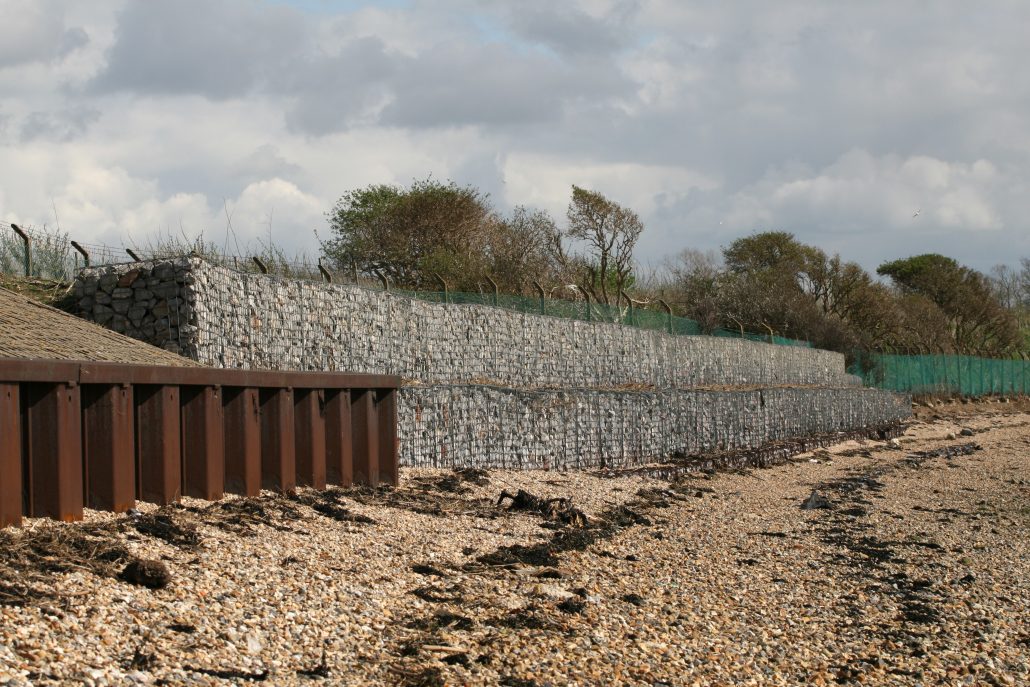
Coastal erosion defences in the form of interlocking concrete blocks in the foreground and stone-filled wired gabion baskets behind
Advantages of gabions
Social
- It does not impede access along the beach
Economic
- At around £110 a metre, they are cheap and easy to construct
- The structure is quick to build and cheap to maintain
- For the cost, they are a good value for money as they can last between 20-25 years
Environmental
- Gabions do not impede sediment movement along the coast by longshore drift.
- They blend in better than most other hard engineering solutions. This is especially the case when sand is blown over them or when they are covered by vegetation.
Disadvantages of gabions
Social
- Access to the beach is difficult as people may have to climb over the rock armour or make detours.
- In a damaged state, gabions are very dangerous.
Economic
- Gabions are restricted to sandy beaches as material thrown at them on shingle beaches would quickly degrade them.
Environmental
- Damaged gabions are unsightly and dangerous to sea birds.
Breakwater
These are large concrete blocks and boulders located offshore to change the direction of waves and reduce longshore drift. They also help absorb wave energy.
Advantages
Beaches retain a natural appearance.
Disadvantages
Difficult to maintain, unattractive, does not protect the cliffs directly and does not stop beach material from being eroded.
Summary
Flashcards
Coming soon
Quiz
Coming soon

